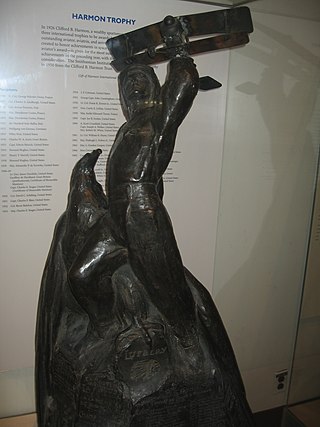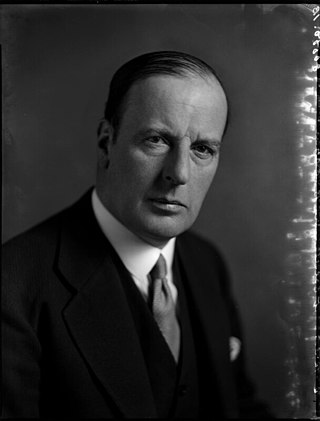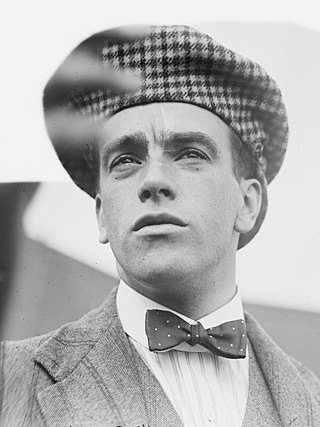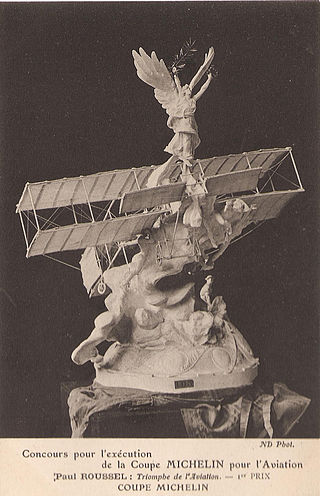
Louis Charles Joseph Blériot was a French aviator, inventor, and engineer. He developed the first practical headlamp for cars and established a profitable business manufacturing them, using much of the money he made to finance his attempts to build a successful aircraft. Blériot was the first to use the combination of hand-operated joystick and foot-operated rudder control as used to the present day to operate the aircraft control surfaces. Blériot was also the first to make a working, powered, piloted monoplane. In 1909 he became world-famous for making the first airplane flight across the English Channel, winning the prize of £1,000 offered by the Daily Mail newspaper. He was the founder of Blériot Aéronautique, a successful aircraft manufacturing company.

The Royal Aero Club (RAeC) is the national co-ordinating body for air sport in the United Kingdom. It was founded in 1901 as the Aero Club of Great Britain, being granted the title of the "Royal Aero Club" in 1910.

John Alcock and Arthur Brown were British aviators who, in 1919, made the first non-stop transatlantic flight. They flew a modified First World War Vickers Vimy bomber from St. John's, Newfoundland, to Clifden, County Galway, Ireland. The Secretary of State for Air, Winston Churchill, presented them with the Daily Mail prize for the first crossing of the Atlantic Ocean by aeroplane in "less than 72 consecutive hours." A small amount of mail was carried on the flight, making it the first transatlantic airmail flight. The two aviators were awarded the honour of Knight Commander of the Most Excellent Order of the British Empire (KBE) by King George V at Windsor Castle a week later.

Harry George Hawker, MBE, AFC was an Australian aviation pioneer. He was the chief test pilot for Sopwith and was also involved in the design of many of their aircraft. After the First World War, he co-founded Hawker Aircraft, the firm that would later be responsible for a long series of successful military aircraft. He died on 12 July 1921 when the aircraft he was to fly in the Aerial Derby crashed in a park at Burnt Oak, Edgware, not far from Hendon Aerodrome.

The Harmon Trophy is a set of three international trophies, to be awarded annually to the world's outstanding aviator, aviatrix, and aeronaut. A fourth trophy, the "National Trophy," was awarded from 1926 through 1938 to the most outstanding aviator in each of the twenty-one member countries and again from 1946–1948 to honor Americans who contributed to aviation. The award was established in 1926 by Clifford B. Harmon, a wealthy balloonist and aviator.

Lieutenant Colonel John Theodore Cuthbert Moore-Brabazon, 1st Baron Brabazon of Tara,, HonFRPS was an English aviation pioneer and Conservative politician. He was the first Englishman to pilot a heavier-than-air machine under power in England, and he served as Minister of Transport and Minister of Aircraft Production during the Second World War.

Claude Grahame-White was an English pioneer of aviation, and the first to make a night flight, during the Daily Mail-sponsored 1910 London to Manchester air race.

Alfred Charles William Harmsworth, 1st Viscount Northcliffe, was a British newspaper and publishing magnate. As owner of the Daily Mail and the Daily Mirror, he was an early developer of popular journalism, and he exercised vast influence over British popular opinion during the Edwardian era. Lord Beaverbrook said he was "the greatest figure who ever strode down Fleet Street." About the beginning of the 20th century there were increasing attempts to develop popular journalism intended for the working class and tending to emphasize sensational topics. Harmsworth was the main innovator. He said, "News is something someone wants to suppress. Everything else is advertising."

Lieutenant Colonel John Cyril Porte, was a British flying boat pioneer associated with the First World War Seaplane Experimental Station at Felixstowe.

The Daily Mail Circuit of Britain air race was a British cross-country air race that took place from 1911 until 1914, with prizes donated by the Daily Mail newspaper on the initiative of its proprietor, Lord Northcliffe. It was one of several races and awards offered by the paper between 1906 and 1925.

Marcel-Georges Brindejonc des Moulinais was a French aviator best known for long-distance flights, including crossing the Baltic Sea. He also flew as an exhibition and racing pilot. He flew reconnaissance missions during the battle of the Marne.

The Sopwith Atlantic was an experimental British long-range aircraft of 1919. It was a single-engined biplane that was designed and built to be the first aeroplane to cross the Atlantic Ocean non-stop. It took off on an attempt to cross the Atlantic from Newfoundland on 18 May 1919, but ditched during the flight owing to an overheating engine.
The Lympne Light Aircraft Trials were held to encourage the development of practical light aircraft for private ownership, with a strong but not exclusive emphasis on fuel economy. They were held in 1923, 1924 and 1926. Each year saw different restrictions on engine size, framed initially in terms of capacity and then weight. The Daily Mail newspaper provided cash prizes throughout though the initiating donation came from the Duke of Sutherland. The Air Ministry were prize givers in the 1924 event. The trials were held at Lympne in Kent, England.

The 1910 London to Manchester air race took place between two aviators, each of whom attempted to win a heavier-than-air powered flight challenge between London and Manchester. The race had first been proposed by the Daily Mail newspaper in 1906. The £10,000 prize was won in April 1910 by Frenchman Louis Paulhan.

George Holt Thomas was an aviation industry pioneer and newspaper proprietor. In 1911, Holt Thomas founded the business which became Aircraft Manufacturing Company Limited or Airco.

The Cody Michelin Cup Biplane was an experimental aircraft designed and built in Britain during 1910 by Samuel Franklin Cody, a prominent showman and aviation pioneer. Cody had worked with the British Army on experiments with man-lifting kites and in October 1908 had successfully built and flown the British Army Aeroplane No 1, making the first officially verified powered flight in the United Kingdom. Cody broke the existing endurance record twice in the aircraft, the second flight, made on 31 December 1910, winning him the Michelin Cup for the longest-lasting flight made over a closed circuit in the United Kingdom before the end of the year.

The Michelin Cup refers to a number of competitions sponsored by the French tyre manufacturer Michelin for long distance flight made in aeroplanes.

Edward A. Bellande was a pioneer of aviation and aeronautics, WW1 navy pilot, barnstormer, skywriter, crop duster, movie stunt artist, motion picture airway liaison, early airline pilot, and one of only ten recipients of the Airmail Flyers' Medal of Honor.

The Blackpool Aviation Week was an early British air show that took place in Blackpool in October 1909. It was recognised by the Aero Club of Great Britain making it Britain's first official air show.



















